Chapter: Biology: Structure and Nature of Living Cell
Structure and Nature of Living Cell
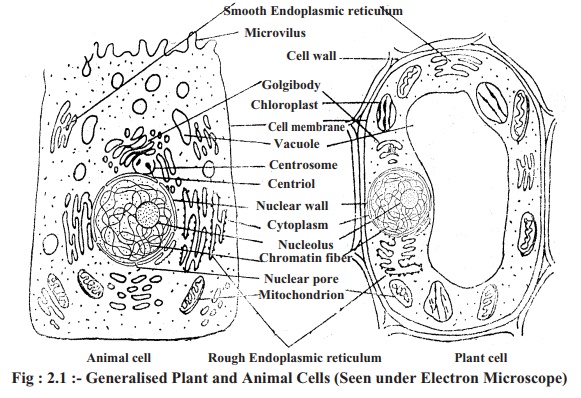
Structure and Nature of Living Cell
Those who have life are living beings. Microorganisms, Plants and Animals have life, so they all are living beings. Living world is composed of microorganisms plants and animals. One or more cells make every living being. Cell is the structural and functional unit of living body. All sorts of reaction and anti- reaction in living body are cell centered. So to know about any living beings one should know about the living cell at first.
All living cells are not alike. As they are, different in structure, they are different in size, shape and functions. Different types of cell are described below in brief.
All the cells of Plants and Animals are eukaryotic but they have differences as well. Difference between Plant cell and Animal cell are shown in a tabular form at the end of this chapter. However the main difference between them is the Plant cells have a non-living cell wall, which is absent in the Animal cells.
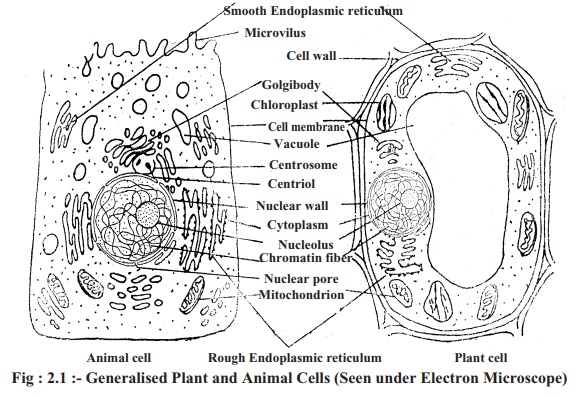
On the basis of Nuclear Structure
Prokaryotie cell or Proto cell :
Nucleus is not well organized in these cells;nuclear membrane and nucleolus are absent here. In these cells Chromosome contains only DNA. Generally no other organelles are present except Ribosome. Cell division happens here through Amitosis process.
Eukaryotic cell or Eucell :
There are well-organised nucleus in these cellswith membrane and nucleolus. Chromosome contains DNA, proteins Chloroplasts, Mitochondria and other organelles. Cell division happens through mitosis process.
On the basis of Function
Somatic cell :
These cells construct the living body but do not take part inreproduction. In the lower group of living objects they are haploid i.e. only one set of chromosomes are present, but in higher groups they are diploid i.e. there are two sets of chromosome in the nucleus.
Reproductive cell:
These cells take part in sexual reproduction but do notconstruct the main body. These cells are also haploid. Sperm and ovum are examples of reproductive cell.
Size, shape and Structure of Living cell :
It is normal to have some diversity in size, shape and structure of cells. The size, shape and structure of a eukaryotic cell (eucell) are described below in brief.
Size :
A cell may be 0.1µ(micron) to 55cm (centimeter) or even more.[1 Millimeter = 1000 Micron]
Shape:
Cells are of different shapes. Mainly they are spherical, oval,rectangular, barrel shaped or polygonal.
Structure of typical cell :
Structurally cells are of various types. For that in a certain cell all the organelles or structural ingredients may not be present. For that reason, considering the presence of all the organelles in a certain cell, it may be termed as a Generalized Cell. A generalized cell has mainly two parts- Cell wall and protoplasm.
Cell Wall:
Cell wall is the unique characteristics of a plant cell. The non-living and hard wall, which constructs the plant cell, is called the cell wall. At first Robert Hook observed it in 1665 AD. There is no cell wall in Animal cells.
Chemical composition of cell wall:
The cell wall is mainly composed of cellulose, hemicellulose, pectose, lignin, suberine etc. Those are made by different carbohydrate compound. The cell wall of fungi is made of a carbohydrate called chitin. The cell wall of bacteria made of protein, lipid and polymer.
Function of cell wall:
The functions of cell wall are to give a definite shape to the cell. It protects the Cell from external injury and gives necessary rigidity and to regulate the flow fluid between external and internal side of the cell.
Protoplasm:
Protoplasm is made by the mixture of different complex compounds. It is jelly like, translucent, viscous, colourless semi solid-living substance. All the pro perties of life are present in it. Protoplasm is divided into three parts: Plasma membrane, Cytoplasm and Nucleus.
1. Plasma membrane or Cell membrane:
Just beneath the cell wall there is a soft living membrane surrounding the whole protoplasm. This is called cytoplasmic membrane or cell membrane.
Stucture:
Plasma membrane is bi-layered. Under electron microscope there revealed a light layer between two dark layers. In the cell membrane of some epithelial cell there found some finger like out growth-these are called Microvilli(Singular : Microvillus). They increase the absorption surface of the cell. Themembrane between two adjacent cells modified in various forms to make theConnection between two cells rigid. They also make the movement of different substances between the cells easier. In many cells spaces in the cell membrane may be broader.
Functions of Cell membrane :
(a) Transportaion of different materials inside and outside the cell, (b) Absorption of different substances (mainly nutrients) from outside the cell, (c) protection of the cell body and giving the cell a definite shape.
2. Cytoplasm :
Outside the nucleus, the part of protoplasm, which is surrounded by the cell membrane, is known as cytoplasm. It is composed ofdifferent organic and inorganic compoundslike water. different nucleic acid and enzymes. The outer area of cytoplasm is more concentrate. less granular and hard, which is called Ectoplasm, and the central area, Which is less concentrated, called Endoplasm.
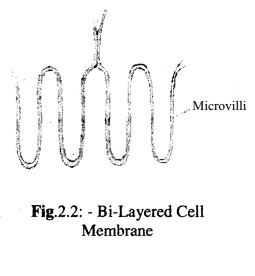
Different organelles like plastids, mitochondria, endoplasmic reticulum, ribosome, golgi bodies, lysosome, centrosome and different nonliving substances are present in the cytoplasm.
Function of Cytoplasm :
(a) to hold different organelles and (b) to performsome organic functions.
Description of organelles present in cytoplasm is given below :
Plastid :
Plastids are largest in size among the organelles present in cytoplasm. They can be seen clearly under microscope. Plastids are not present in Fungi, Bacteria and Animal cells.
Plastids are mainly of two types: Leucoplastid or Leucoplast and Chromoplastid or Chromoplast. Leucoplastids are colourless and Chromoplastids are coloured. Chromoplastid again is of two types Chromoplast and Chloroplast.
Leucoplast:
They are colourless, as they have no pigment. Leucoplast may beconverted into Chromoplast or mainly chloroplast in contact with sunlight. In absence of light the case may be reversed.
Position:
Leucoplasts are present in the cells of organs like root. undergroundstem etc. which do not come in contact with sunlight.
Shape:
Leucoplast may be semicircular or tubular in shape
Function:
Their function is to store food.
Chromatoplast:
Chromatoplasts are green or other colour; when green, it iscalled chloroplast and when they are other colour it is called Chromoplast.
Chromoplast:
They are variously coloured, other than green, mostly yellowand red in colour. They are also variable in shape. Chromoplast occurred in coloured part of plants. e.g. petals, coloured fruit and seeds, roots of carrot etc.
Function:
Flowers are coloured and beautiful due to their presence.
Chloroplast:
They possesses green pigments named chlorophyll in excess as aresult they are green. Other pigments are also present to some extent. Every cell may contain one or more chloroplast.
In higher plants the shapes of chloroplast is lenceolate. In Algal cells their shapes are of various types, e.g. cup shaped, spiral, reticulate, star shaped. semicircular etc.
Structure of chloroplast:
The following parts make Chloroplast :
1. A bi-layered semipermiable membrane surrounds the whole chloroplast. It is composed of protein and lipid. This is called lipoprotein.
2. A hygroscopic matrix surrounded by a membrane is there. This matrix is called stroma.
3. In the stroma, 40-80 well-arranged barrel shaped grana (sing: granum) are present. In one granum there are 5-25 granum disc. Insidethe granum disc, there are spaces. Probably chlorophyll and other photosynthetic materials are present in this chamber.
4. Some granum discs of two adjacent grana are connected by minute tubular bodies, which are called stroma lamelli.
5. Many crystalline bodies are arranged in the membrane of grana disc. These are called quantosome. In the dark phase of photosynthesis, carbon-di-oxide isassimilated mainly in the quantosome.
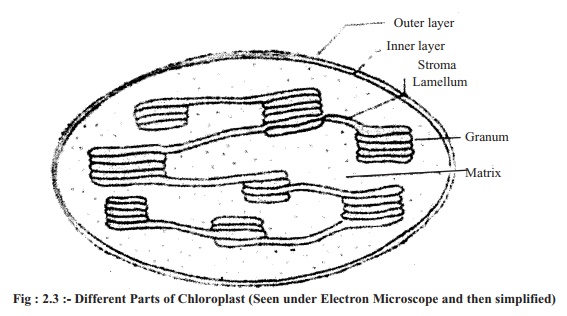
Function:
Its function is to prepare carbohydrate food by the process photosynthesis.
Mitochondria:
Krebs cycle, fatty acid cycle, electron transport system etc.take place in mitochondria (sing: mitochondrion). All energy producing process occurs in mitochondria for which mitochondria are compared to the powerhouse of the cell. Number of mitochondria may vary according to the species. Normally each cell contains average 300-400 mitochondria. Their shape may be globular, rod, thread, star-shaped or ring-shaped. The outside of mitochondria is surrounded by a bi-layered membrane. The membrane is made by lipoprotein, which is enriched with lipid and protein. The outer membrane is smooth but the inner one has a series of enfolding into the inner cavity of mitochondria. These enfolding are called cristae. Small stalked granular bodies are arranged on the cristae and they are called auxisome. Various enzymes.
Endoplasmic reticulum: ER
In a mature cell a network is found in the cytoplasm. This is called endoplasmic reticulum. Endoplasmic reticulum is of two types - smooth and rough. ER having ribosome on its body is called rough endoplasmic reticulum.
Structure:
They are bounded by double-layered semipermiable membrane.Normally they are branched but may occur in parallel. They are continuous with the nuclear membrane and the cell membrane. Chemically the membrane is made by lipoprotein. Small granular bodies may be present on it.
Function:
They form the skeleton of protoplasm. Protein synthesis occurs inrough endoplasmic reticulum. Lipid, in alternative opinion, different hormones, glycogens etc. are synthesized in the smooth endoplasmic reticulum. They play the role of internal carrier of lipid and protein.
Ribosome:
Ribosomes are small spherical /granular organelle. They may occur freely in the cytoplasmand may be attached on the outer wall of endoplasmic reticulum.
Structure:
These are spherical andbounded by double layered membrane. Mostly they are made by protein.

Function:
In ribosome various amino acids are combined to synthesize protein.
Golgi bodies/Golgi apparatus:
Golgi bodies may be flat, spherical or elongated. Normally they are present near the nucleus. It was first observed by a scientist named Golgi in 1898 AD in the nerve cells of owl and cat. This organelle is afterward named Golgi apparatus after his name. In plant cells their number is small for which it is not always visible under microscope.
Structure:
Golgi apparatus is tubular, small vesicle, vacuolar, elongated vessellike or lamillar bodies. They are vacuolar space bounded by double-layered membrane.
necessary for respiration are well arranged in auxisome. About 70 types of enzymes and 14 types of co-enzymes are present in it. Matrix is also present inside the free space of mitochondria. The main function of mitochondria is to produce energy, like- respiration, oxidative phosphorilation, electron transport system etc.
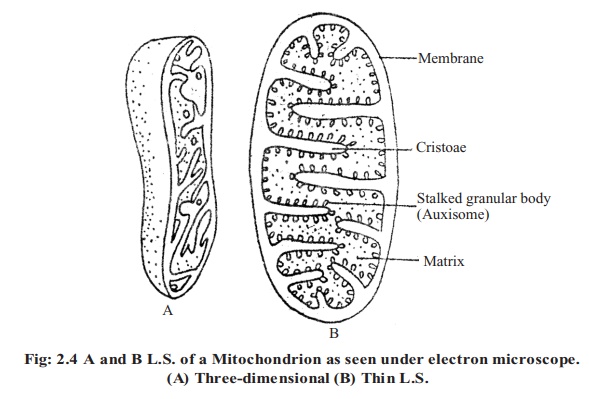
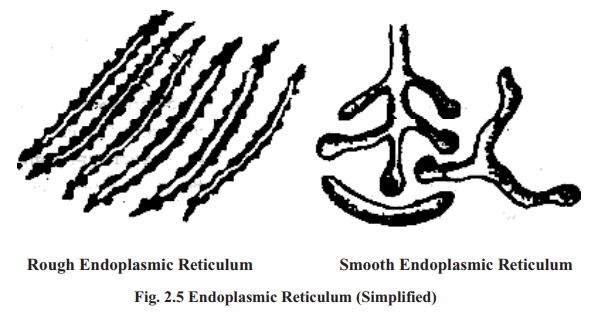
Function:
Function of Golgi bodies are- synthesis of lysosome and non-proteinsubstances, releasing some enzymes, expelling cell water and attaching substances to its membrane produced by endoplasmic reticulum.
Lysosome:
Lysosome is formed by various enzyme bounded by a membrane. Normally they are spherical. Their membrane is bi-layered.
Function:
Their functions are phagocytosis i.e. to eat the invading enemy inthe cell, to protect different organelles in the cell by dissolving enzymes and to help in digestion.
Centrosome:
In animal cell there is a spherical body outside the nucleus, which is called centrosome. The fluid by which it is composed is called centrosphere. At the center of centrosphere there are two cylindrical objects called centriole. At the time of cell division the pair of centriole is separated and moves to two opposite pole (of the cell).
Function:
At the time of cell division centrosome directs the poles of spindleapparatus and help in cell division.
Vacuole:
The open spaces that found in the cytoplasm is the vacuole. In immature cell their number are many and small in size. But in a mature cell all the vacuoles combined together to form a large vacuole. The thin membrane that covers the vacuole is called tonoplast. The internal fluid of the vacuole is called cell sap. Different kind of inorganic salts, organic acid, carbohydrate, protein, fat, various complex substances and various colour are present in the cell sap.
Nucleus:
Denser and clearer organ found in the protoplasm is Nucleus. Robert Brown discovered and named nucleus in 1831 AD in the cell of orchid leaf. Normally each cell contains one nucleus. Some eukaryotic cell like sieve tube, mature red blood cells of mammal do not have nucleus. Usually nucleus is spherical and present at the centre of the cell. They may be present by the side of a large vacuole. Nucleus may smaller or larger in size and shape.
Function :
Nucleus controls the total activity of the cell.

Structure:
Chemically they are made of nucleic acid and protein. It containssome protein, trace of DNA (Deoxi-ribo nucleic acid) and RNA (Ribo Nucleic Acid), little amount of Co-enzyme and other materials. Physically they are made by the following parts: - Nuclear membrane, Nucleoplasm, Nucleolus and Chromosome
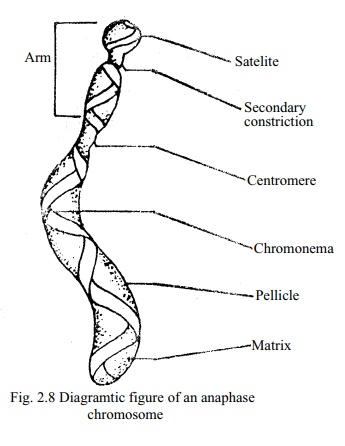
Nuclear membrane:
The doublelayered transparent membrane, which make the outer covering of the nucleus is the nuclear membrane
The outer membrane porous but the inner one is not. Chemically the membrane is made of protein and lipid.
Function:
The main function ofthis membrane.is to keep the nucleoplasm, chromosome and the nucleus distinct from cytoplasm. Transportation and communication between internal materials and cytoplasm is also done through this membrane.
Nucleoplasm:
It is a transparentand dense fluid bounded by nuclear membrane. Nucleolus and chromosomes are present in it.
Function:
It holds chromosomes andperforms various organic functions.
Nucleolus:
The denser, small and round body found in the nucleus is thenucleolus. Every nucleus normally contains a single nucleolus. Nucleolus is usually attached to a certain area of a Particular chromosome. The region of chromosome where it remain attached is called `secondary constriction'.
Chemical composition:
The main compositions of the nucleolus are protein,RNA and a trace of DNA.
Physical structure:
Nucleolus is usually divided into three parts namelyfibrous, granular and matrix.
Function:
To synthesise various types of DNA and protein and preserve them.Chromosome: In every nucleus there is a definite number of chromosomes according to the characteristic of definite species. It can be seen under microscope after proper staining, only in a dividing cell. Every chromosome contains one or more centromere, one chromonema or more chromonemata and some chromosome may have satellite. Chromosome bears a number of gene and genes are responsible for expressing characteristics of different species.
Chemical composition of chromosome:
Chemically each chromosome iscomposed of DNA, RNA, Histon and non-histon protein. Besides, some calcium and magnesium are also present here.
Function:
Chromosome is the bearer and carrier of hereditary properties of the organism.
4. Ergastic substances :
In a mature cell, in addition to the above-mentioned substances. there are various types of non-living objects. They are present in the cytoplasm. Non-living objets may be classified into three types, namely reserve food, secretory materials and excretory materials.
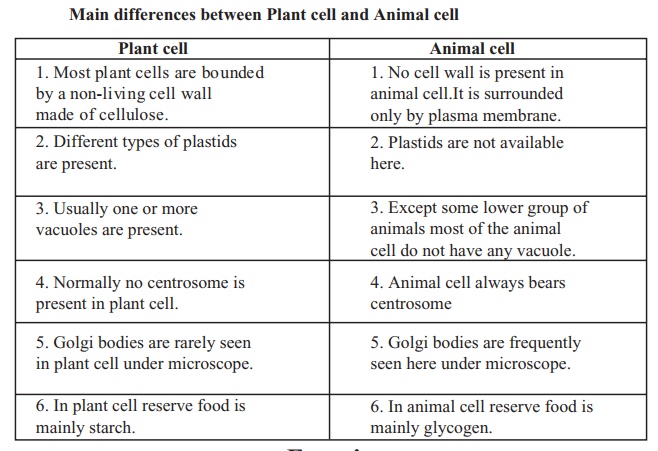
Related Topics